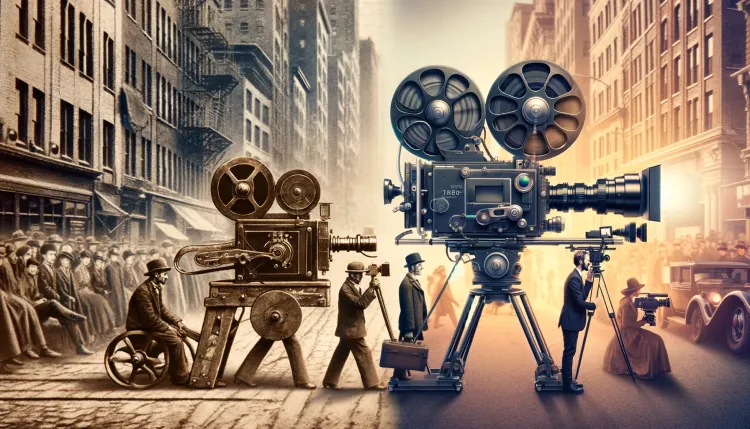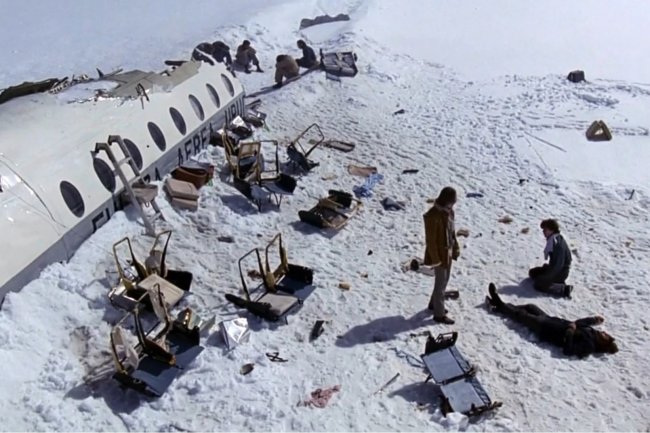Revolution of the Reel: Tracing the Evolution of Cinema Cameras from Film to Digital
The fascinating evolution of cinema cameras from the early mechanical devices of the Lumière brothers to today's high-definition digital cameras. Learn how each technological leap has transformed filmmaking

The Evolution of the Cinema Camera: Capturing Motion Through the Ages
The history of the cinema camera is a fascinating journey through technological innovation and artistic expression. From the earliest motion picture devices to the advanced digital systems used today, each step in the development of the cinema camera has expanded the horizons of filmmaking and storytelling.
The Early Days: Mechanical Wonders
The birth of the cinema camera coincides with the beginnings of film itself in the late 19th century. The very first motion picture cameras were essentially modified still cameras, designed to capture multiple frames in quick succession. The French Lumière brothers are credited with inventing the Cinématographe in 1895, a device that was not only a camera but also a projector and printer. It was lightweight, hand-cranked, and portable, making it possible to shoot films outside the confines of a studio.
The 1920s-1930s: Sound and Color
The introduction of sound in cinema with films like "The Jazz Singer" in 1927 necessitated significant changes in camera technology. Cameras needed to be quieter to avoid drowning out the recorded soundtracks. This led to the development of soundproof camera housings known as "blimps." Meanwhile, the exploration of color film technology brought cameras capable of handling new kinds of film stock that were sensitive to different colors.
Post-War Innovations: Wider and Lighter
Post World War II, the film industry saw significant advancements in camera technology. The introduction of lighter, more portable cameras facilitated the rise of on-location shooting, which was a hallmark of Italian Neorealism and the French New Wave. The advent of widescreen formats in the 1950s, such as CinemaScope, required modifications in camera lenses and mechanisms to accommodate the new aspect ratios.
The Digital Revolution: From Analog to Digital
The late 20th century marked the beginning of the digital revolution in cinematography. Digital cameras began to replace traditional film cameras by the late 1990s and early 2000s. These cameras, such as those developed by Sony and Panasonic, allowed for immediate playback and editing, drastically reducing film costs and expanding creative possibilities. The transition reached a significant milestone with movies like "Star Wars: Episode II – Attack of the Clones" (2002), one of the first major films to be shot entirely digitally.
Modern Cinema Cameras: High Definition and Beyond
Today, cinema cameras like the Arri Alexa and RED Digital Cinema cameras dominate the market, offering filmmakers capabilities such as ultra-high definition video, incredible low-light performance, and extensive dynamic range. These tools have democratized filmmaking, allowing even independent filmmakers access to high-quality equipment. Additionally, new technologies like virtual reality cameras are pushing the boundaries of how we experience and create films.
Legacy and Impact
The history of the cinema camera is not just about technical advancements but also about the impact these tools have had on the art of filmmaking. Each innovation has allowed filmmakers to tell stories in new and exciting ways, influencing the types of films that get made and how audiences experience them. As we look to the future, the evolution of the cinema camera continues to be an integral part of the cinematic narrative, promising even greater possibilities for storytelling innovation.
In conclusion, the cinema camera's evolution from a bulky, mechanical device to a compact, digital powerhouse mirrors the evolution of cinema itself. It reflects a history of innovation driven by both technological advances and the artistic aspirations of filmmakers around the world.
What's Your Reaction?






















